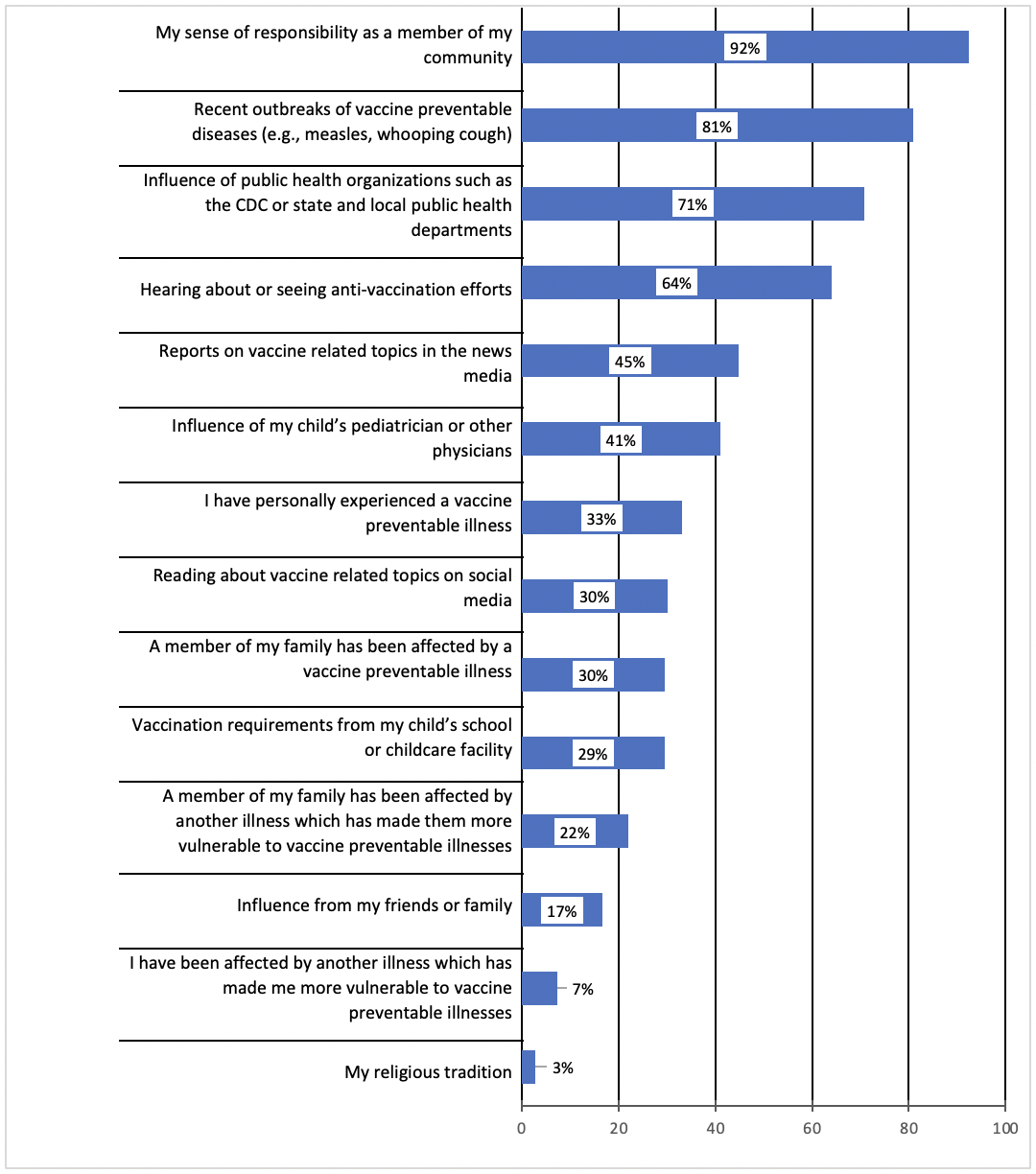Back
Immunizations/Delivery
Category: Abstract Submission
Immunizations/Delivery II
513 - Attitudes, activities, and motivations of pro-vaccine advocates
Sunday, April 24, 2022
3:30 PM – 6:00 PM US MT
Poster Number: 513
Publication Number: 513.326
Publication Number: 513.326
Mattie E. Kerns, University of Colorado School of Medicine, Aurora, CO, United States; Sean T. O'Leary, University of Colorado School of Medicine, Denver, CO, United States; Jessica R. Cataldi, University of Colorado School of Medicine and Children's Hospital Colorado, Aurora, CO, United States

Mattie E. Kerns, B.S.
Student
University of Colorado School of Medicine
Aurora, Colorado, United States
Presenting Author(s)
Background: Vaccine hesitancy is a growing public health concern and has been classified as a major threat to global health by the WHO. While there has been extensive research on the attitudes of vaccine-hesitant individuals, little is known about the attitudes of pro-vaccination advocates.
Objective: To describe among vaccine advocates: 1) vaccine attitudes, including attitudes about primary care clinic vaccine policies, 2) vaccine advocacy activities, and 3) motivations for vaccine advocacy.
Design/Methods: An internet survey was conducted July-November 2019. Vaccine advocacy groups across the US were invited to partner in survey distribution and participants were recruited from a convenience sample of their members. Advocacy activities were categorized as either policy-related, in-person, or online.
Results: Response rate was 8% (1,239/15,475). Respondents were mostly female, white, and highly educated (Table 1). Most reported Democratic Party affiliation and the most common occupation was healthcare practitioner. The majority of the respondents were from California (45%), Colorado (18%), and Ohio (5%). The majority of respondents (90%) strongly or somewhat agreed that a policy that did not allow patients to refuse or spread-out vaccines would encourage them to join a primary care clinic. The most common policy-related activities were contacting an elected official about vaccines, signing petitions to change vaccine policy, and attending a rally or other organized event to promote vaccine policy (Figure 1). Participants also described ‘other’ policy-related advocacy activities including occupational advocacy work (e.g., physician, nurse, or public health worker) and testifying for pro-vaccine legislation. The most common in-person activities to advocate for vaccines were speaking with a friend or family member, speaking at a school, or speaking at a community event. The most commonly reported online activities to advocate for vaccines were using social media, email and text messages, and interacting with news sites. The most common motivations for vaccine advocacy were a sense of responsibility as a community member, recent disease outbreaks and influence of public health groups (Figure 2).Conclusion(s): Our sample of vaccine advocates engaged in a variety of different advocacy activities and appeared to be a highly motivated by responsibility to their community as well as a range of other factors. Continued work to better understand vaccine advocates may help inform efforts to curb vaccine hesitancy and influence those who accept vaccines to advocate for vaccines.
M Kerns Complete Resumeeras resume.pdf
Figure 2: Motivating Factors for Vaccine Advocacy (n = 1,041)
Objective: To describe among vaccine advocates: 1) vaccine attitudes, including attitudes about primary care clinic vaccine policies, 2) vaccine advocacy activities, and 3) motivations for vaccine advocacy.
Design/Methods: An internet survey was conducted July-November 2019. Vaccine advocacy groups across the US were invited to partner in survey distribution and participants were recruited from a convenience sample of their members. Advocacy activities were categorized as either policy-related, in-person, or online.
Results: Response rate was 8% (1,239/15,475). Respondents were mostly female, white, and highly educated (Table 1). Most reported Democratic Party affiliation and the most common occupation was healthcare practitioner. The majority of the respondents were from California (45%), Colorado (18%), and Ohio (5%). The majority of respondents (90%) strongly or somewhat agreed that a policy that did not allow patients to refuse or spread-out vaccines would encourage them to join a primary care clinic. The most common policy-related activities were contacting an elected official about vaccines, signing petitions to change vaccine policy, and attending a rally or other organized event to promote vaccine policy (Figure 1). Participants also described ‘other’ policy-related advocacy activities including occupational advocacy work (e.g., physician, nurse, or public health worker) and testifying for pro-vaccine legislation. The most common in-person activities to advocate for vaccines were speaking with a friend or family member, speaking at a school, or speaking at a community event. The most commonly reported online activities to advocate for vaccines were using social media, email and text messages, and interacting with news sites. The most common motivations for vaccine advocacy were a sense of responsibility as a community member, recent disease outbreaks and influence of public health groups (Figure 2).Conclusion(s): Our sample of vaccine advocates engaged in a variety of different advocacy activities and appeared to be a highly motivated by responsibility to their community as well as a range of other factors. Continued work to better understand vaccine advocates may help inform efforts to curb vaccine hesitancy and influence those who accept vaccines to advocate for vaccines.
M Kerns Complete Resumeeras resume.pdf
Figure 2: Motivating Factors for Vaccine Advocacy (n = 1,041)

